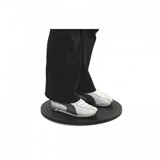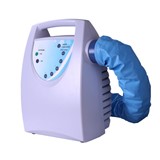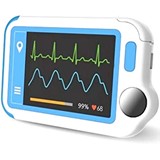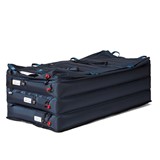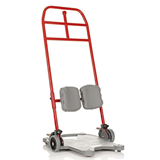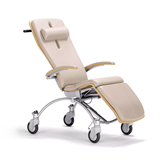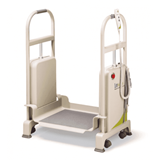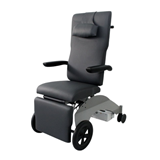I. Identifying and Diagnosing Common Problems with Patient Hoists
A. Understanding different types of patient hoists:
- Ceiling-mounted patient hoists
- Mobile patient hoists with wheels
- Sit-to-stand patient hoists
- Bariatric patient hoists
B. Visual inspection and assessment techniques:
- Check for any visible damage, such as dents or cracks
- Inspect the hoist's frame, mast, and boom for structural integrity
- Verify the condition of slings, ensuring there are no tears or fraying
- Examine the control panel and buttons for signs of wear or malfunction
C. Recognizing signs of mechanical wear and tear:
- Unusual noises during operation (grinding, squeaking, etc.)
- Jerky or uneven movement while lifting or lowering
- Inconsistent speed or difficulty in maneuvering the hoist
- Frequent tripping of safety mechanisms or error messages
D. Identifying potential safety hazards:
- Check for loose or missing bolts and fasteners
- Ensure that safety mechanisms, such as brakes, are functioning correctly
- Verify that the emergency stop button is operational
- Look for any obstructions or debris that may hinder the hoist's movement
II. Addressing Hoist Stability and Balance Issues during Lifting
Hoist stability and balance are critical factors when performing patient transfers. Proper maintenance and adherence to safety guidelines can help address potential issues effectively. Here are some important steps to ensure stability and balance during lifting:
A. Importance of Proper Weight Distribution
- Always check the weight capacity of the patient hoist and ensure it is not exceeded.
- Distribute the patient's weight evenly across the sling to prevent overloading one side.
- Avoid sudden movements during lifting to maintain stability.
B. Ensuring Correct Attachment of Slings and Accessories
- Double-check that the sling is securely attached to the hoist's hooks or connectors.
- Use compatible and appropriate slings based on the patient's needs and condition.
- Train staff on proper sling attachment techniques to minimize risks.
C. Checking for Damaged or Worn-out Components
- Regularly inspect the hoist for any signs of wear, damage, or corrosion.
- Pay attention to the condition of straps, cables, and moving parts.
- Replace or repair any damaged components promptly to maintain stability and prevent accidents.
D. Adjusting the Hoist Settings for Optimal Stability
Follow the manufacturer's guidelines for adjusting the hoist's settings.
Ensure that the hoist is appropriately calibrated for the patient's weight and needs.
Take into account the patient's physical condition and comfort during the lifting process.
III. Dealing with Malfunctions in Hoist Controls and Power Systems
To ensure smooth operation and optimal performance of patient hoists, it is essential to promptly address any malfunctions in the control panel and power systems. Here are some troubleshooting steps to tackle these issues effectively:
Testing the control panel for responsiveness
- Check if all control buttons and functions respond when pressed or activated.
- Verify that the emergency stop and lowering functions work as expected.
- Ensure the control panel display provides clear and accurate information.
- Verifying power sources and connections
Confirm that the patient hoist is connected to a reliable power source.
- Inspect power cables and connectors for signs of damage or wear.
- Consider using a voltage meter to check power output and identify irregularities.
Replacing faulty components or batteries
- If the control panel shows signs of damage or non-responsiveness, consider seeking professional assistance to replace damaged components.
- In the case of mobile patient hoists, check the battery's condition and replace it if it no longer holds a charge or shows signs of deterioration.
Understanding error codes and troubleshooting steps
- Familiarize yourself with the manufacturer's manual to interpret error codes displayed on the control panel.
- Follow the provided troubleshooting steps to diagnose and resolve specific issues associated with the displayed error codes.
- Remember, when dealing with malfunctions in hoist controls and power systems, it is crucial to maintain a professional and technical approach. Always refer to the manufacturer's documentation and seek expert advice when necessary to ensure proper resolution without compromising safety and performance.
IV. Troubleshooting Slings and Attachment Problems during Patient Transfer
Inspecting slings for tears, fraying, or damage:
- Regularly examine slings for any signs of wear and tear, such as tears, fraying, or cuts.
- Replace damaged slings immediately to avoid compromising patient safety.
- Store slings properly when not in use to prevent unnecessary damage.
Verifying compatibility with the patient hoist model:
- Check that the sling is compatible with the specific patient hoist model being used.
- Refer to the hoist and sling user manuals for guidance on appropriate pairings.
- Avoid using slings that do not match the hoist's weight capacity and design specifications.
Ensuring proper attachment and securing of slings:
- Train healthcare staff on correct sling attachment methods based on the hoist's guidelines.
- Double-check that all attachment points are secure and free from entanglements.
- Encourage staff to follow a standardized process for sling attachment to minimize errors.
Offering alternative solutions for unique patient needs:
- Recognize that some patients may have specific requirements not met by standard slings.
- Consult with occupational therapists or specialists to find suitable alternatives.
- Explore adjustable or custom-made slings to accommodate patients with unique conditions
V. Handling Battery and Charging Problems for Mobile Patient Hoists
Monitoring battery life and performance
- Regularly check the battery level indicator on the hoist.
- Conduct routine capacity tests to assess battery health.
- Monitor charging cycles to identify any abnormalities.
Properly charging and maintaining batteries
- Always use the manufacturer-recommended charger for the hoist's battery.
- Follow the charging instructions provided in the user manual.
- Avoid overcharging or undercharging the battery to prolong its lifespan.
- Keep the charging area clean and free from obstructions.
Replacing batteries when necessary
- Monitor battery capacity decrease over time; replace if it falls below acceptable levels.
- Look for signs of physical damage or leakage, indicating the need for replacement.
- Follow proper disposal protocols for old batteries to ensure environmental safety.
Using backup solutions for uninterrupted usage
- Have spare, fully charged batteries available for quick swap-outs when needed.
- Consider using a secondary power source, such as a power pack or generator.
- Implement a battery rotation system to ensure equal usage and proper maintenance.
VI. Seeking Professional Assistance for Complex Hoist Repairs
Understanding the limitations of DIY repairs
- Acknowledge that improper DIY repairs can lead to safety risks and void warranties.
- Avoid attempting repairs beyond basic maintenance tasks.
Identifying situations that require expert intervention
- When the hoist exhibits persistent malfunctions despite basic troubleshooting.
- In the case of unusual noises, burning smells, or sparks during operation.
- If the hoist experiences a sudden drop in performance or fails safety tests.
Contacting authorized service centers or technicians
- Locate and contact the manufacturer-approved service centers in your area.
- Engage only qualified and experienced technicians familiar with patient hoists.
- Provide detailed information about the hoist model, issues, and maintenance history.
Considering maintenance contracts for long-term support
- Evaluate the benefits of signing a maintenance contract with the manufacturer or a trusted service provider.
- Review the terms, response times, and services covered under the contract.
- Long-term maintenance contracts can provide peace of mind and timely assistance.
VII. Preventative Measures to Prolong the Lifespan of Patient Hoists
Following the manufacturer's guidelines for operation and maintenance
- Abide by the user manual for proper hoist operation and safety guidelines.
- Adhere to weight limits, attachment procedures, and usage recommendations.
- Regularly inspect components and perform maintenance tasks as specified.
Implementing regular inspections and maintenance routines
- Set up a schedule for periodic inspections by trained staff.
- Perform routine maintenance tasks, such as lubrication and cleaning.
- Document all inspections and maintenance activities for future reference.
Training staff on proper hoist usage and safety protocols
- Conduct comprehensive training sessions for all personnel involved in hoist operation.
- Educate staff on safe patient transfer techniques and potential hazards to avoid.
- Encourage continuous learning and updates on hoist operation best practices.
Keeping detailed records of hoist usage and servicing history
- Maintain a log of hoist usage, including the frequency and load capacities.
- Document all maintenance and repairs performed on the hoist.
- Utilize these records to identify patterns, plan maintenance, and track performance.
In conclusion, troubleshooting and addressing common issues with patient hoists require a systematic and informed approach to ensure patient safety and efficient operation. Understanding the various types of hoists and their components, conducting thorough visual inspections, and recognizing signs of mechanical wear and tear are fundamental steps in identifying problems. Hoist stability and balance during lifting play a critical role, necessitating proper weight distribution, correct sling attachment, and regular checks for damaged components. When dealing with malfunctions in hoist controls and power systems, careful testing, power source verification, and adherence to manufacturer instructions are essential.
Troubleshooting sling and attachment problems mandates routine inspections for wear, compatibility checks, and adherence to proper attachment techniques. Mobile patient hoists require meticulous battery management, including monitoring battery life, following charging guidelines, and having backup solutions for uninterrupted usage. Complex hoist repairs are best left to authorized technicians, with DIY repairs having limitations that can compromise safety. Prolonging the hoist's lifespan involves adhering to manufacturer guidelines, regular inspections, comprehensive staff training, and maintaining detailed records of usage and servicing history.
By following these steps and guidelines, healthcare facilities can ensure the optimal performance, safety, and longevity of patient hoists, contributing to the overall well-being of both patients and caregivers.



-160x160-state_article-rel-cat.png)

